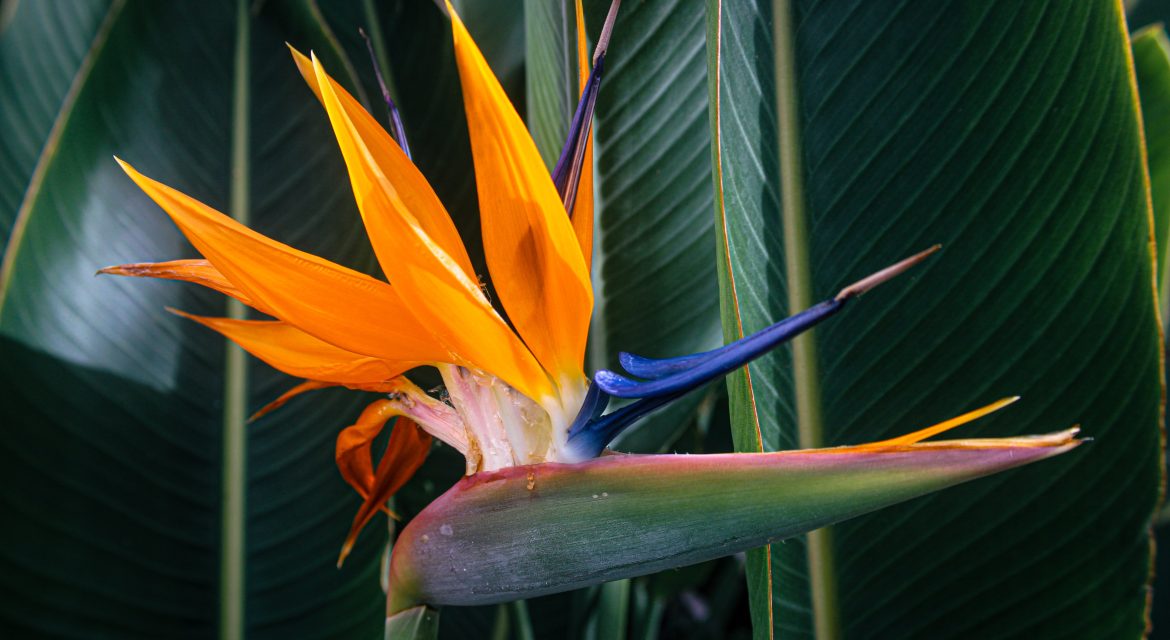Did you know that there are actually a number of desert plants that make great houseplants? In this blog The Bird of Paradise plant is a tropical beauty known for its striking orange and blue flowers that resemble the head of a colorful bird.post, we'll share some of our favorite desert plants that are perfect for adding a touch of green to your indoor spaces.
The bird of paradise plant is a stunning tropical plant that is native to South Africa. It is known for its beautiful and vibrant flowers, which resemble the shape of a bird in flight. These plants are a popular choice for gardeners and houseplant enthusiasts alike, and with the proper care, they can thrive and produce flowers for years to come. In this guide, we’ll cover everything you need to know about the bird of paradise plant, from its history and unique features to its care requirements and potential problems.
History and Features of the Bird of Paradise Plant
The bird of paradise plant, also known by its scientific name, Strelitzia reginae, was first introduced to Europe in the late 18th century by explorers and botanists. Its unique and exotic appearance quickly caught the attention of gardeners and horticulturists, and it became a popular plant for both indoor and outdoor use. Today, the bird of paradise plant is a common sight in gardens and homes all around the world.
One of the most striking features of the bird of paradise plant is its flowers. The flowers are made up of three bright orange petals and three blue petals, which are fused together to form a unique shape that resembles the head and beak of a tropical bird. The plant also produces large, glossy, green leaves that are arranged in a fan-like pattern. When fully mature, the plant can reach heights of up to six feet, making it an impressive addition to any space.
Caring for Your Bird of Paradise Plant
To ensure that your bird of paradise plant thrives and produces beautiful flowers, it’s important to provide it with the proper care. Here are some tips for caring for your plant:
- Light: The bird of paradise plant thrives in bright, indirect sunlight. It’s best to place it near a window that receives plenty of natural light, but avoid direct sunlight as it can scorch the leaves.
- Water: These plants prefer well-draining soil and should be watered regularly but not excessively. Allow the top inch of soil to dry out between waterings. Be careful not to overwater as this can lead to root rot.
- Temperature and Humidity: The bird of paradise plant prefers warm, humid conditions. Keep it in a room or plant in proper climate zone outdoors with a temperature between 60-70 degrees Fahrenheit and a humidity level of 50% or higher. If your home is dry, you can increase humidity levels by misting the plant with water or placing a humidifier nearby.
- Fertilizer: During the growing season (spring and summer), it’s recommended to fertilize your bird of paradise plant every two weeks with a balanced fertilizer.
- Repotting: These plants don’t need to be repotted often, but when they do, it’s best to do it in the spring. Use a well-draining soil mix and choose a pot that is slightly larger than the current one.
Potential Problems with Your Bird of Paradise Plant
Like any plant, the bird of paradise can be susceptible to certain issues. Here are some common problems and how to address them:
- Brown Tips: Brown tips on the leaves can be caused by underwatering or low humidity levels. Increase watering and humidity levels to help address this issue.
- Yellow Leaves: Yellow leaves can be a sign of overwatering or root rot. Check the soil moisture levels and reduce watering if necessary.
- Lack of Flowers: If your bird of paradise plant isn’t producing flowers, it could be due to a lack of sunlight or fertilizer. Ensure that your plant is getting enough light and nutrients to support flower production.
- Pests: Spider mites and mealybugs are common pests that can infest bird of paradise plants. If you notice these pests, remove them with a gentle spray of water or by wiping the leaves with a damp cloth. You can also use an insecticidal soap to help control the infestation.
In addition to these issues, it’s important to keep an eye out for any signs of disease, such as leaf spots or powdery mildew. If you notice any unusual symptoms, consult a gardening expert or plant specialist for guidance on how to address the problem.
The bird of paradise plant is a beautiful and exotic addition to any garden or home. With its unique flowers and striking foliage, it’s no wonder that this plant has become a popular choice for plant enthusiasts around the world. By following the tips outlined in this guide, you can ensure that your bird of paradise plant thrives and produces flowers for years to come. Whether you’re a seasoned gardener or a beginner, the bird of paradise plant is a rewarding and stunning plant to grow and care for.





